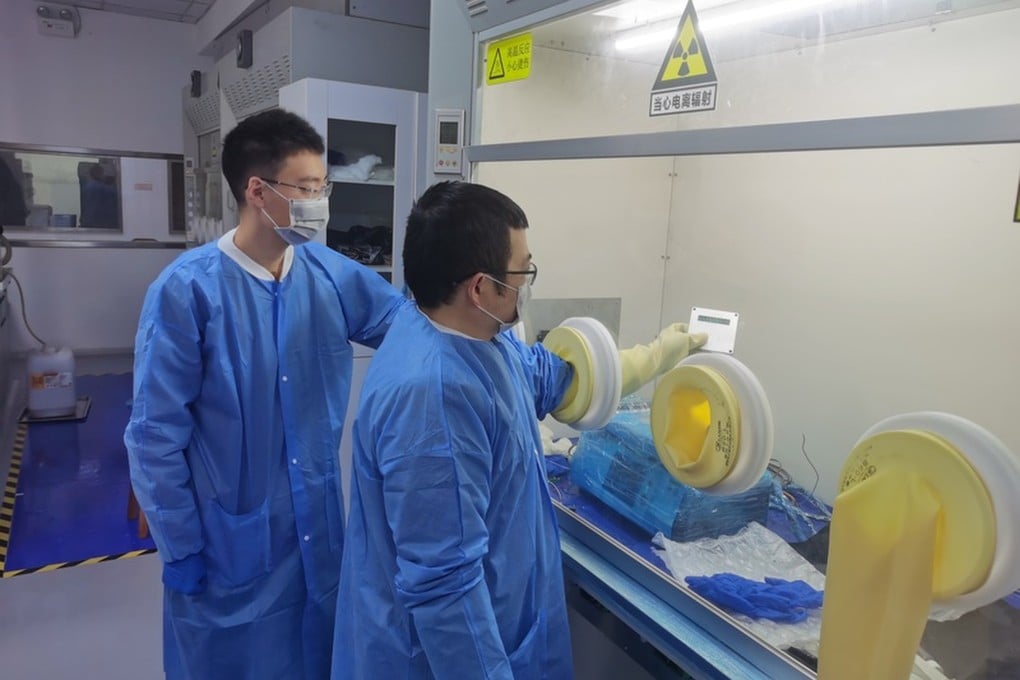
Chinese Scientists Develop Nuclear Battery with Potential 100-Year Lifespan
In a groundbreaking advancement poised to revolutionize energy storage and power supply in extreme environments, Chinese researchers have unveiled a nuclear battery capable of operating for up to a century without recharging. This innovative power source, developed by scientists at Northwest Normal University in Gansu province, leverages the radioactive decay of carbon-14 to generate a steady flow of electricity, offering unprecedented longevity and reliability.
Harnessing Carbon-14: The Science Behind the Battery
The core of this nuclear battery’s functionality lies in its use of carbon-14, a radioactive isotope of carbon known for its extended half-life of approximately 5,730 years. As carbon-14 decays, it emits beta particles, which are harnessed by a silicon carbide semiconductor to produce a continuous flow of electrons, thereby generating electrical power. This process classifies the device as a betavoltaic battery, a technology that directly converts the kinetic energy of beta particles into electrical energy without the need for thermal conversion.
Unprecedented Longevity and Durability
Designed to operate for 50 years under standard conditions, the battery’s lifespan can extend beyond 100 years in extreme environments, making it an ideal power source for applications where regular maintenance or battery replacement is impractical. Such environments include polar regions, deep-sea explorations, and space missions, where devices require long-term, reliable power. The battery’s ability to function steadily within a temperature range of minus 100 degrees Celsius to 200 degrees Celsius further underscores its robustness.
High Energy Density and Minimal Degradation
One of the standout features of this nuclear battery is its impressive energy density, reported to be ten times higher than that of conventional lithium-ion batteries. This high energy density ensures a compact design without compromising power output, which is crucial for applications with space constraints. Moreover, the battery exhibits a degradation rate of less than 5% over its designed 50-year lifespan, ensuring consistent performance over extended periods.
Potential Applications: From Medical Devices to Space Exploration
The ultra-long-lasting nature of this nuclear battery opens up a plethora of applications across various fields:
-
Medical Devices: Implantable medical devices, such as pacemakers, could greatly benefit from this technology. Current pacemakers require battery replacements every 5 to 15 years, necessitating additional surgeries. A nuclear battery with a lifespan exceeding 50 years could eliminate the need for such procedures, enhancing patient comfort and reducing medical risks.
- Aerospace and Defense: Satellites, space probes, and other aerospace equipment operating in harsh environments could utilize these batteries to ensure long-term, maintenance-free power supply, thereby increasing mission durations and reducing operational costs.
- Remote Monitoring Systems: Devices deployed in inaccessible or hazardous locations, such as deep-sea sensors or polar research stations, require reliable power sources that can function without maintenance for extended periods. This nuclear battery could meet these stringent requirements, ensuring continuous data collection and transmission.
Safety and Environmental Considerations
While the term “nuclear battery” might evoke concerns regarding safety and environmental impact, it’s important to note that betavoltaic devices are designed with stringent safety measures:
-
Containment of Radioactive Material: The carbon-14 used in the battery is encapsulated within robust materials, preventing any leakage of radioactive substances. This design ensures that the beta particles emitted during decay are contained and safely converted into electrical energy.
- Minimal Radiation Exposure: The beta particles emitted by carbon-14 have low penetration depth, meaning they can be easily shielded by thin layers of material. As a result, the radiation levels outside the battery are negligible, posing no significant risk to users or the environment.
- Environmental Impact: The long lifespan of the battery reduces the need for frequent replacements, thereby decreasing electronic waste. Additionally, the stable end-products of carbon-14 decay do not pose environmental hazards, aligning with sustainable practices.
Global Implications and Future Prospects
The development of this nuclear battery by Chinese scientists signifies a monumental step in energy storage technology, with far-reaching implications:
-
Advancement in Energy Technology: This innovation positions China at the forefront of nuclear battery technology, showcasing its commitment to pioneering sustainable and long-lasting energy solutions.
-
Influence on Global Energy Policies: The successful implementation of such technologies could influence global energy policies, encouraging investments in alternative energy storage solutions that offer longevity and reliability.
-
Catalyst for Further Research: The breakthrough is likely to spur further research into betavoltaic devices and other nuclear-based energy sources, potentially leading to more efficient and compact designs suitable for a broader range of applications.
The creation of a nuclear battery capable of lasting up to a century without recharging represents a significant milestone in energy technology. By harnessing the properties of carbon-14 and employing betavoltaic principles, Chinese scientists have developed a power source that combines longevity, durability, and safety. This innovation holds the potential to transform various sectors, from medical devices to space exploration, by providing reliable and maintenance-free energy solutions. As research and development in this field continue, we can anticipate further advancements that will shape the future of energy storage and utilization.
